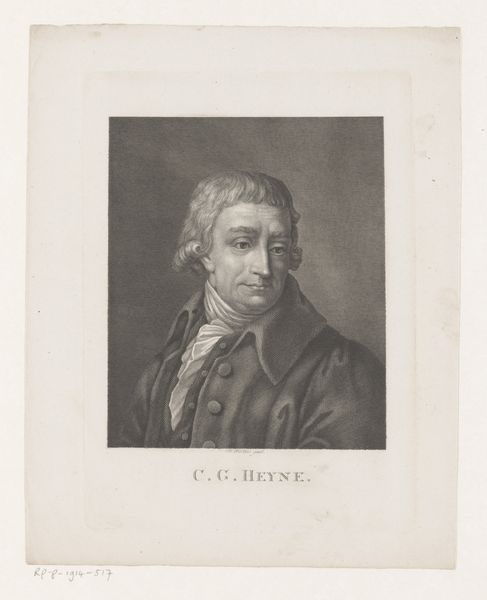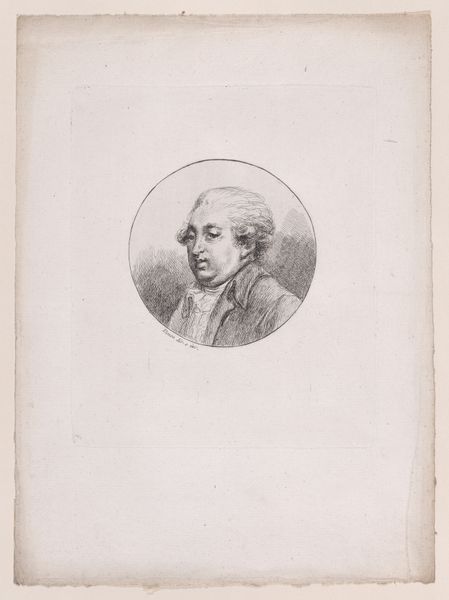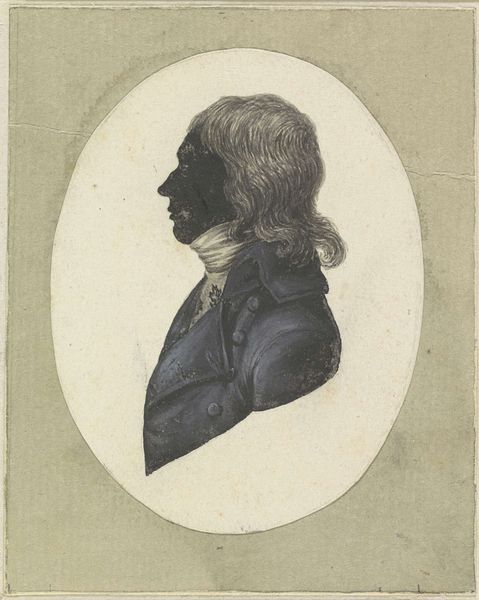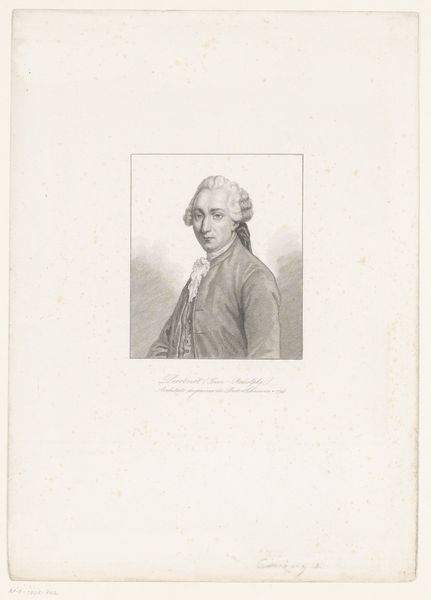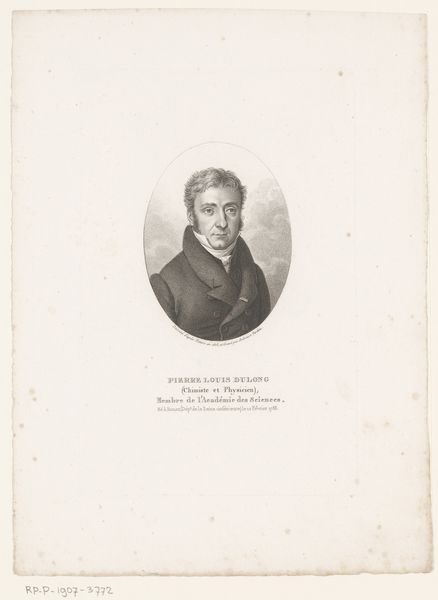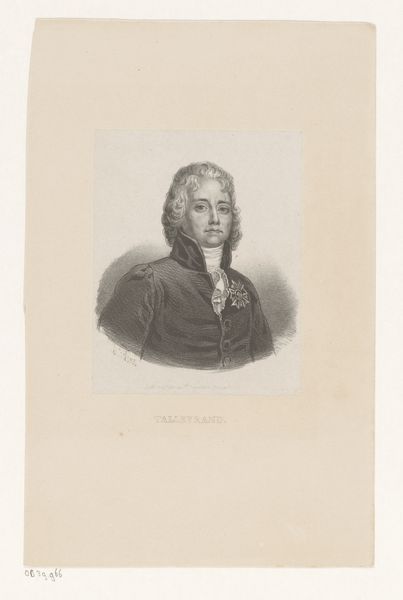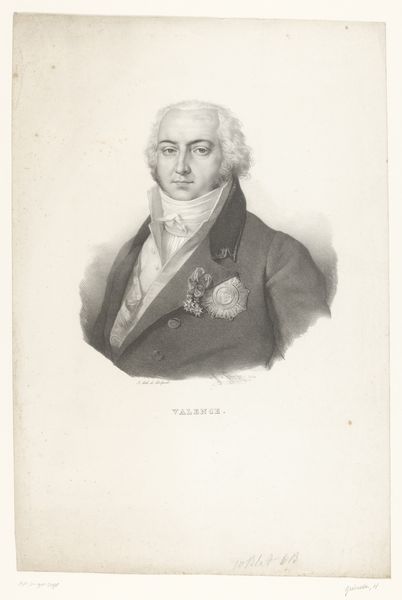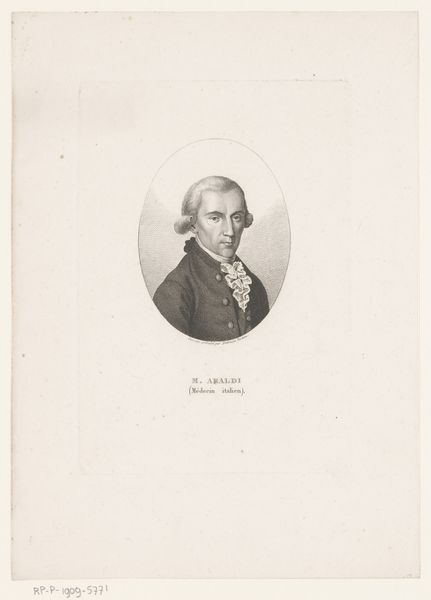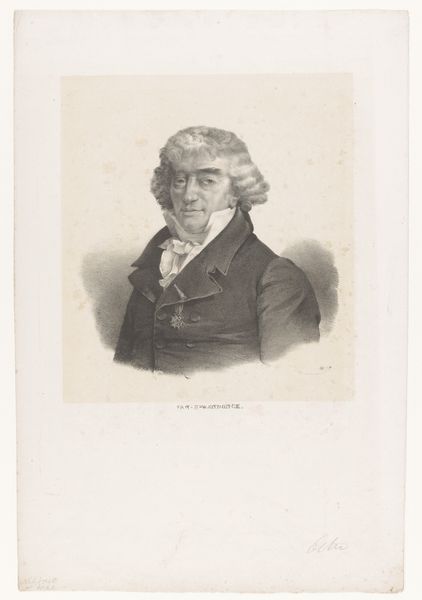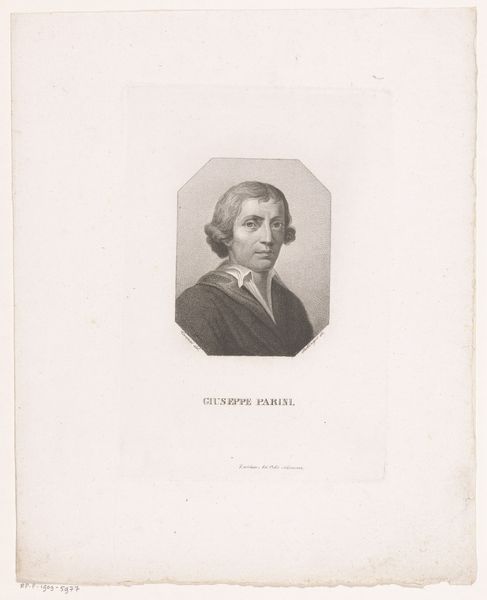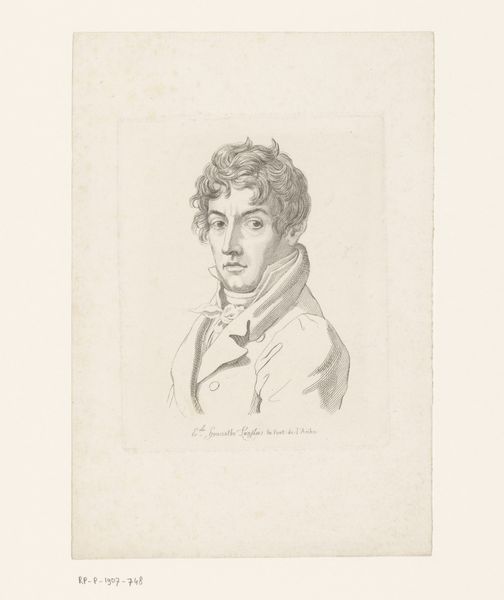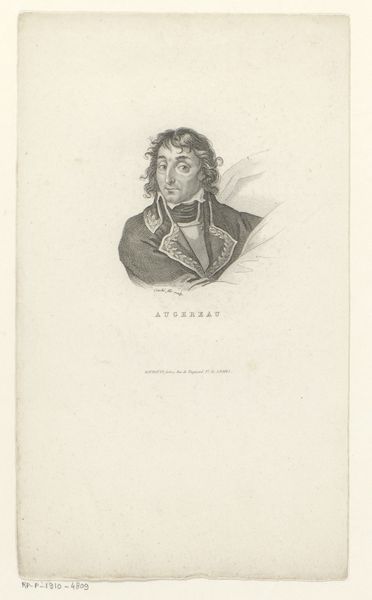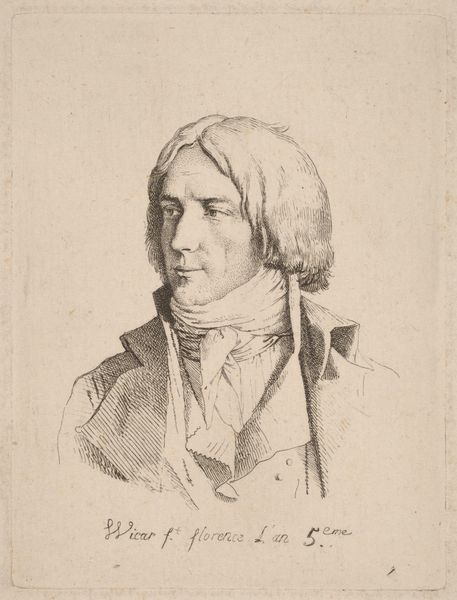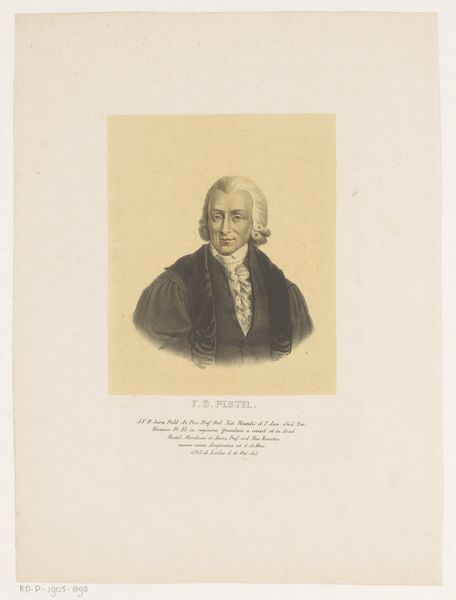
Dimensions: height 200 mm, width 130 mm
Copyright: Rijks Museum: Open Domain
Editor: Here we have Léopold Flameng's "Portret van Louis Antoine Leon de Saint-Just," likely created sometime between 1841 and 1910. It's a drawing, it appears, made with pencil or engraving. The light pencil work gives it an almost ethereal quality. What do you see in this piece, particularly considering its historical subject? Curator: Saint-Just! An engraving – fascinating. Beyond a simple likeness, I see an idealized symbol, an attempt to resurrect and perhaps even sanitize the image of a complex figure. Look at the careful rendering, the almost angelic face. Doesn’t it seem designed to evoke a particular feeling? Perhaps admiration? Editor: It does seem romanticized. He was, after all, a key figure in the French Revolution, not exactly a peaceful period. Do you think the artist is deliberately downplaying the more violent aspects of Saint-Just’s history? Curator: Precisely. The artist utilizes familiar visual cues – the Neoclassical style, the portrait format itself – to subtly frame Saint-Just. Notice how his gaze is directed, confident but not confrontational. The ruffled cravat suggests a certain refinement. What message do you think Flameng is trying to communicate by invoking those stylistic tropes? Editor: Perhaps to present Saint-Just as a figure of reason and order, rather than a radical revolutionary. It's a carefully constructed image that seeks to control how we perceive this historical figure. I’m interested in how visual language can revise collective memory! Curator: Absolutely. It’s a testament to the power of images – their capacity to both reflect and shape our understanding of history. Think of how the David's paintings created heroes during the revolution, and how this portrait continues that ideological project. Editor: That is something to think about: that portraiture of famous figures such as Saint-Just helps the culture revisit memory. Curator: Yes, understanding the visual symbols helps one read not just the work, but collective memory too.
Comments
No comments
Be the first to comment and join the conversation on the ultimate creative platform.
